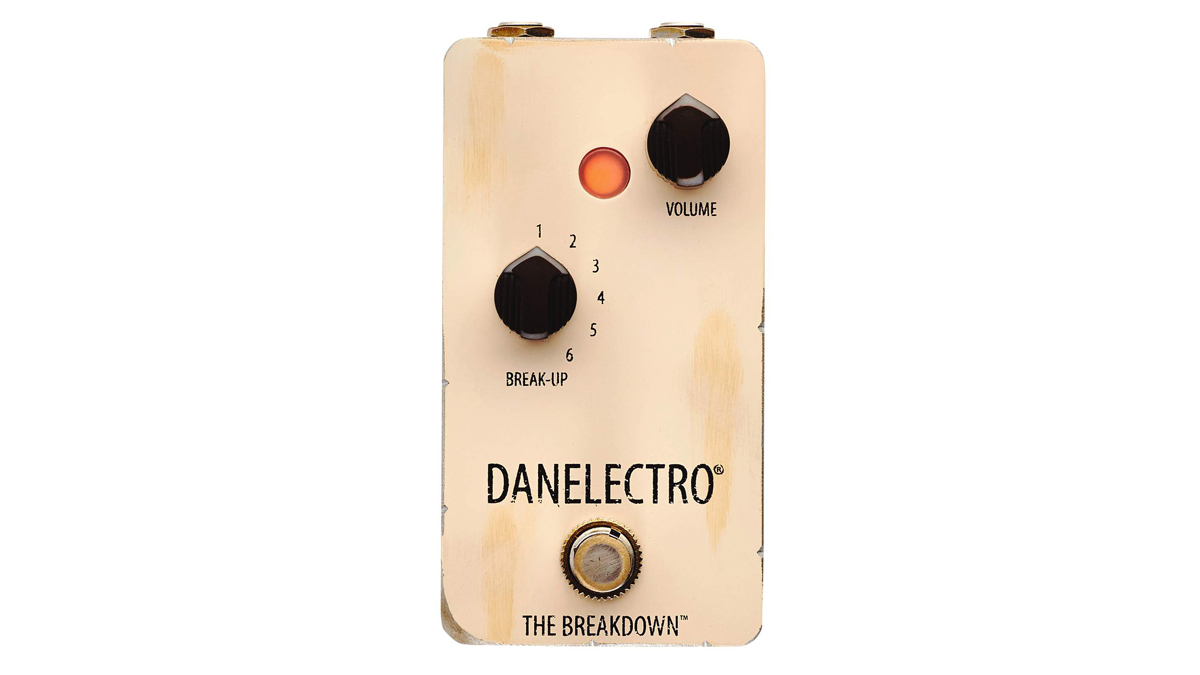MusicRadar Verdict
The Breakdown is a very practical tool in front of an amp, as an always-on tone conditioner or a kicked-in boost.
Pros
- +
Simplicity of operation.
- +
Resurrects a vintage unit.
- +
Six break-up positions offer usefully different options.
Cons
- -
The faux-distressed finish has probably added unnecessary cost.
MusicRadar's got your back
Danelectro has introduced a new ‘vintage’ pedal range that not only revives the sounds of certain ‘lost’ pedals from way back, but also presents them in distressed enclosures in the same vein as relic’d guitars.
The initial launch sees two pedals. The Eisenhower Fuzz is based on a 50-year-old fuzzbox with an octave effect and features two selectable voices. The other pedal, The Breakdown, which we’re looking at here, is perhaps the more intriguing of the two in that it has just an output volume knob and an unusual six-way rotary switch that offers increasing amounts of ‘break up’.
Dano is not saying exactly which pedal it’s based on, but our suspicions are that it reimagines the Univox UD-50 Uni-Drive, one of the first ever drive pedals, well documented as being used by Jimmy Page. The Uni-Drive was a huge pedal with a treadle that controlled volume, and a six- position rotary switch that attenuated the input. No one in their right mind would want to bring it back in that form, but the idea suits a compact pedal with a knob, rather than a treadle, setting the volume.

Setting 1 on the Break-Up knob is where you need to go for a clean boost with a solid bottom and a nice amount of top-end enhancement - you’re at unity gain with the Volume knob at about 1 o’clock, so you can give your amp a tickle by turning that up further. Each advance on the numbered scale adds more grit and gets louder, needing the Volume knob to be rolled back a touch if you just want the extra dirt without a volume boost.
Should you want the boost, however, there’s tons available to really slam your amp hard. Positions 2 and 3 are best described as venturing beyond clean and are great for adding a frisson of character to your clean sound; 4 and 5 offer a more gnarly drive, while position 6 comes with a side order of fuzz tone. All six, with appropriate setting of the Volume knob, work really well feeding into a driven amp for extra punch.
Trevor Curwen has played guitar for several decades – he's also mimed it on the UK's Top of the Pops. Much of his working life, though, has been spent behind the mixing desk, during which time he has built up a solid collection of the guitars, amps and pedals needed to cover just about any studio session. He writes pedal reviews for Guitarist and has contributed to Total Guitar, MusicRadar and Future Music among others.
“Delivers streamlined DAW integration with an excellent hammer action keyboard”: Arturia Keylab 88 Mk3 review
“I have an original 909 – every time I try to use it I feel like I’m ruining it”: House hero Riva Starr on his studio essentials and his love of analogue synths
“A synthesizer that is both easy to use and fun to play whilst maintaining a decent degree of programming depth and flexibility”: PWM Mantis review











